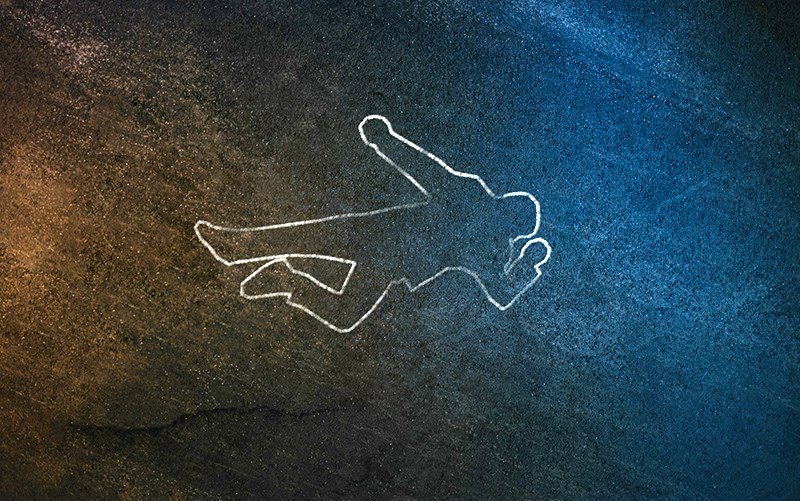SASKATCHEWAN - There was an increase in homicides in Saskatchewan with 65 in 2021, compared to 60 the previous year.
In the RCMP jurisdictions across the province, the RCMP reported 34 homicides in 2021, compared to 31 in 2020, said Mandy Maier, spokesperson for Saskatchewan RCMP.
Of the 34 homicides that occurred in the RCMP’s jurisdiction in 2021, 20 were in the north district, seven were in the central district, and seven were in the south district, said Maier.
For the municipal police forces, Regina saw an increase in 2021 and Prince Albert saw an increase in the last couple of years, while Saskatoon saw a decrease.
Regina had 15 homicides in 2021, compared to 12 in 2020, said Les Parker, spokesperson for Regina Police Service.
Prince Albert had the same amount of homicides in 2021 as they did in 2020.
“In 2021, we reported a tragic nine homicides, and in 2020, we responded to nine homicides involving 11 victims,” said Charlene Tebbutt, spokesperson for Prince Albert Police Service. “These numbers are an increase over previous years."
Saskatoon, however, saw a decrease in homicides in 2021 with seven compared to 12 in 2020, and 16 in 2019, said Brad Jennings spokesperson for Saskatoon Police Service.
Dalmeny Police Service didn’t report any homicides in 2021.
“I’m happy to report we have had no homicides in Dalmeny,” said Scott Rowe, Chief of Police.
High homicide rate in Saskatchewan
Saskatchewan had the highest provincial homicide rate per capita in 2020. Provincial homicide rates remain the highest in Saskatchewan and Manitoba.
In 2020, Saskatchewan recorded the highest provincial homicide rate with 5.09 homicides per 100,000 population, up from 4.69 in 2019 and the highest since provincial homicide rates became available in 1961. In 2019, Saskatchewan had the second highest homicide rate, behind Manitoba.
Gang activity
In Canada, there were 743 homicides in 2020, according to Statistics Canada. One in five of those homicides were gang-related. The number of homicides in Canada in 2021 isn't available yet.
Nationally, gang-related homicides decreased in 2020 by 10 per cent (148) compared to 2019 (162).
Saskatchewan, however, had the highest number (20) of gang-related homicides in a rural area in 2020, making up 40 per cent of the country’s gang-related homicides.
Nationally, approximately eight out of every 10 (79 per cent) of the gang-related homicides were committed with a firearm.
Prince Albert Police Service attributes guns and gang activity to its increase in violent crime.
“An increase in guns and weapons, drugs, property crime, and gang activity are significant factors in the increase in violent crime in our community,” said Tebbutt. “Poverty, addictions, and mental health concerns also play a role.”
The Prince Albert Police Service uses a multi-level approach to address illegal gang and gun activity and has several units working to target gangs, weapons, and property crime, said Tebbutt.
“Our organization also continues to focus on proactive approaches to prevent crime and is committed to high-visibility patrols and community policing,” she added. “We continue to work with our community and safety partners on initiatives and priorities aimed at preventing crime and keeping residents safe.”
Indigenous accused were as likely as non-Indigenous accused to be involved in a gang-related homicide in 2020.
High number of Indigenous victims
Indigenous people are over-represented in the criminal justice system and as victims of crime. The homicide rate of Indigenous people was almost seven times higher than the rate of non-Indigenous people.
In 2020, Indigenous people accounted for 28 per cent of homicide victims and 37 per cent of accused persons despite only representing five per cent of Canada’s total population. Of the 201 Indigenous victims of homicide in 2020, 163 were men and 38 were women.
A history of colonization, including residential schools, work camps and forced relocation is identified as having profoundly impacted First Nations, Métis, and Inuit (Indigenous) communities and families, according to The Truth and Reconciliation Commission of Canada.
“Indigenous peoples often experience social and institutional marginalization, discrimination, and various forms of trauma and violence — including intergenerational trauma and gender-based violence. As a result, many Indigenous peoples experience challenging social and economic circumstances.”
According to Statistics Canada, among the provinces in 2020, the rate of Indigenous homicide victims was the highest in Saskatchewan (22.74 per 100,000 Indigenous population), followed by Alberta (18.29) and Manitoba (15.32). Winnipeg had the most Indigenous victims (21), followed by Edmonton (17), and Saskatoon (13).
In 2020, 59 per cent of Indigenous people in Canada lived outside of a census metropolitan area (CMA). Overall, 59 per cent of homicides of Indigenous victims (118 victims) occurred in rural areas outside of a CMA, and 41 per cent occurred in a CMA (83 victims).
One-quarter of homicide victims were identified as visible minorities, with 50 per cent being Black.
Many victims were reported as missing prior to the incident being identified as a homicide, according to Statistics Canada. In 2020, 40 victims were first reported missing. Of those 40 victims, 43 per cent (17) were Indigenous.





